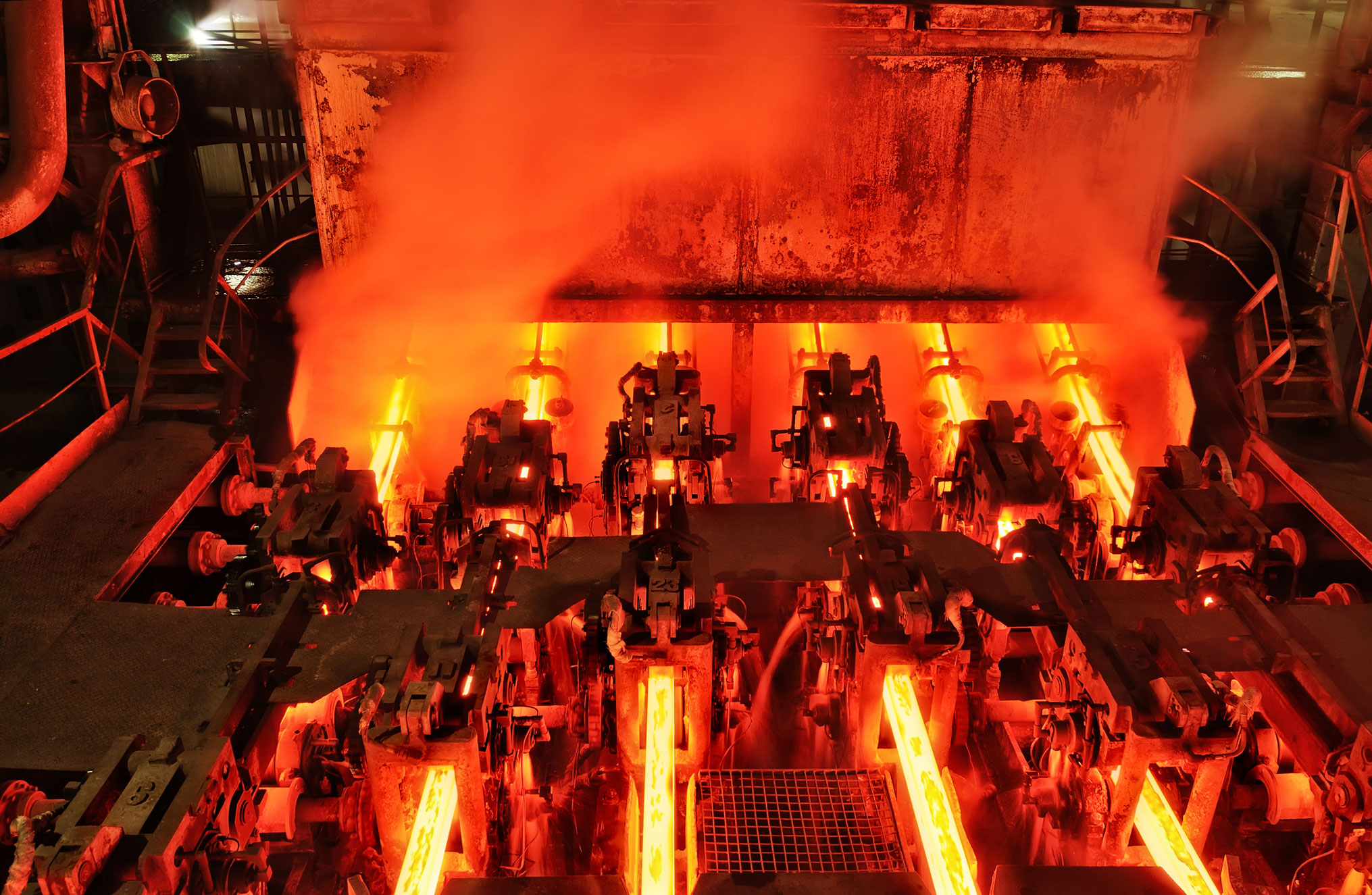Introduction
Iron billets are one of the fundamental products in the steel industry, serving as the primary raw material for producing various metal products. These billets, produced in different shapes, play a critical role in infrastructure development, construction, and numerous other industries. This article, prepared by Rosha Steel, provides a comprehensive overview of iron billets, their types, production processes, and diverse applications.
What Are Iron Billets?
Iron billets are semi-finished metal products made by melting iron ore or steel scrap. They are produced in cubic, rectangular, or occasionally cylindrical shapes and are used as raw materials for manufacturing rebar, beams, sheets, and other steel products.

Types of Iron Billets
Iron billets are categorized based on their production process and application:
Billet: A square or circular section billet used for producing rebar and steel wire.
Bloom: A larger section billet used for manufacturing beams and steel rails.
Slab: A rectangular section billet used for producing steel sheets and large pipes.
Iron Billet Production Process
The production of iron billets involves the following stages:
Melting Raw Materials
Iron ore or steel scrap is melted in a blast furnace or electric arc furnace. During this stage, impurities such as sulfur and phosphorus are removed, achieving the desired chemical composition.
Casting
The molten metal is poured into specialized molds. This process can be continuous casting or single-stage casting.
Cooling
The billets are cooled to achieve their final shape. The cooling method and rate significantly affect the quality of the billets.
Cutting and Packaging
The produced billets are cut to specified lengths and prepared for transportation to consumer industries.
Applications of Iron Billets
Iron billets are used in various industries, including:
Construction Industry: Manufacturing rebar, beams, and other structural components.
Automotive Industry: Producing vehicle parts and components.
Oil and Gas Industry: Manufacturing high-pressure pipes and related equipment.
Shipbuilding: Used in building ship hulls and components.
Advantages and Limitations of Iron Billets
Advantages:
High quality and uniform chemical composition.
Versatility in producing various steel products.
Variety in sizes and shapes for different applications.
Limitations:
Requires advanced infrastructure for production.
High production cost due to significant energy consumption.
Global Trends in Iron Billet Production
With advancements in technology, the production of iron billets is moving towards greater efficiency and reduced environmental impact. New methods like sponge iron production and the use of energy-efficient electric furnaces are among the significant trends in this industry.

Key Points for Purchasing Iron Billets
To buy high-quality iron billets, consider the following:
Chemical composition and relevant certifications.
Production standards and technical specifications.
Supplier credibility and track record.
Rosha Steel, with years of experience in supplying steel products, is ready to offer high-quality iron billets that meet global standards.
Conclusion
Iron billets, as one of the essential raw materials in the industry, play an irreplaceable role in the economic and industrial development of countries. Understanding the types, production processes, and applications of this product can help in making better decisions regarding its purchase and use. Rosha Steel is proud to provide high-quality products and consulting services to meet your needs in this field.
If you have any experience using iron billets or need more information, feel free to share your thoughts with us.



